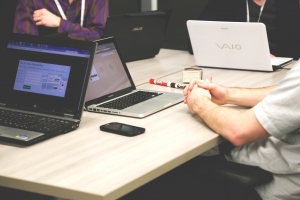please click here:
https://www.dragon-abrasives.com/sandblasting-media.html
Introduction
In the evolving world of surface preparation and finishing, Plastic Blasting Media (PBM) has emerged as a groundbreaking solution. This versatile abrasive is increasingly replacing traditional methods like sandblasting and glass bead blasting in industries that demand delicate yet effective cleaning. From aerospace components to automotive parts and electronic equipment, PBM offers a non-destructive approach that balances cleaning efficiency with material preservation.
This comprehensive guide explores the science, benefits, applications, and selection criteria for plastic blasting media, helping manufacturers and surface treatment professionals understand why PBM is redefining modern abrasive blasting standards.
What Is Plastic Blasting Media?
Plastic Blasting Media is a type of synthetic abrasive made primarily from thermoset plastics such as urea, melamine, or acrylic. These materials are manufactured into uniform particles with precise hardness and size specifications, designed for controlled impact during blasting.
Unlike traditional abrasives, PBM is lightweight and non-conductive, which makes it ideal for applications requiring gentle surface cleaning, coating removal, or substrate preservation. Its softer composition minimizes substrate wear, preventing warping or distortion in sensitive materials.
Types of Plastic Blasting Media
Different formulations of PBM are designed for distinct industrial needs. The most common types include:
| Type | Material Base | Mohs Hardness | Key Features | Common Applications |
|---|---|---|---|---|
| Type II | Urea | 3.5 | Balanced hardness, reusable, economical | Automotive coating removal |
| Type III | Melamine | 4.0 | Harder cutting ability, less dust | Aerospace paint stripping |
| Type V | Acrylic | 3.0 | Softest, excellent surface preservation | Electronics and composites |
| Type VI | Polyester | 3.8 | High durability, minimal heat buildup | Mold cleaning, composites |
Each type offers unique characteristics suited to different substrates and operational priorities. For instance, Type III Melamine is preferred in aerospace maintenance for its superior cleaning without damaging aluminum structures.
How Plastic Blasting Media Works
The working principle of PBM lies in controlled kinetic energy transfer. When propelled by compressed air, the plastic particles strike the surface at high speed, fracturing and lifting away coatings, contaminants, or oxidation without eroding the base material.
Unlike harder abrasives, which remove layers aggressively, PBM's low-density composition allows for precise material removal. It achieves clean, uniform surfaces while maintaining the geometry and integrity of the substrate. This makes it an excellent choice for precision industries.
Advantages of Using Plastic Blasting Media
Plastic Blasting Media offers numerous advantages that extend beyond conventional abrasive methods:
-
Surface Protection:
PBM is gentle enough to clean painted or composite surfaces without scratching or pitting. -
Reusability:
Due to its resilience, it can be recycled multiple times before breakdown, reducing overall operational costs. -
Dust Reduction:
The material generates minimal dust, improving visibility and worker safety in blasting environments. -
Environmental Friendliness:
Being non-toxic and recyclable, PBM supports sustainable manufacturing practices. -
Precision Cleaning:
It removes specific coatings or contaminants without disturbing adjacent areas—a key advantage for detailed parts.
Applications Across Industries
Plastic Blasting Media is widely used across various high-precision sectors:
-
Aerospace: Stripping paint from aluminum or composite aircraft components without weakening the structure.
-
Automotive: Removing coatings, carbon deposits, and rust from parts without affecting tolerances.
-
Electronics: Cleaning delicate equipment like circuit boards or connectors.
-
Military: Maintenance of radar components, missiles, and other sensitive devices.
-
Marine: Removing coatings and corrosion from fiberglass hulls or marine components.
In all these fields, PBM delivers reliable, consistent, and safe cleaning results—qualities that are indispensable in precision industries.
Comparison: Plastic Blasting Media vs Traditional Abrasives
| Feature | Plastic Blasting Media | Sand/Glass Bead | Soda Blasting |
|---|---|---|---|
| Hardness | Low to medium (3–4 Mohs) | High (6–7 Mohs) | Very soft (2.5 Mohs) |
| Reusability | 10–20 cycles | 1–2 cycles | Single use |
| Dust Generation | Low | High | Moderate |
| Substrate Damage Risk | Minimal | High | Low |
| Cost Efficiency | Medium (reusable) | Low (disposable) | Medium |
| Eco-Friendliness | Excellent | Poor | Good |
This table highlights PBM's superior balance between performance, sustainability, and substrate safety—making it the ideal choice for industries demanding precision and environmental responsibility.
How to Choose the Right Plastic Blasting Media
Choosing the correct PBM depends on several operational factors:
-
Substrate Material: Softer substrates (like composites or aluminum) require softer media such as acrylic or urea.
-
Contaminant Type: Hard coatings or epoxy layers may require melamine-based media for better cutting power.
-
Blasting Pressure: Lower air pressure (20–40 psi) is recommended for delicate work, while tougher coatings can handle higher pressures.
-
Media Size: Smaller particles create smoother finishes, while larger ones provide faster coating removal.
Testing small samples before full-scale use helps determine the best combination of media type and parameters for optimal results.
Process Optimization and Safety Considerations
To maximize efficiency and safety, consider these best practices:
-
Proper Ventilation: Even though PBM produces minimal dust, ensuring good airflow maintains operator safety.
-
Media Recycling Systems: Incorporating reclaim systems extends the lifespan of the media and reduces costs.
-
Static Control: PBM is non-conductive; therefore, grounding and anti-static measures are necessary in electronic environments.
-
Temperature Control: Avoid excessive heat buildup, which can affect both the media and the substrate.
Following these measures ensures a controlled, efficient, and safe blasting environment.
Sustainability and Environmental Impact
One of the most appealing aspects of PBM is its eco-friendly profile. Traditional abrasives often produce silica dust or require costly waste disposal due to hazardous residues. PBM, on the other hand, is non-toxic and can be reused multiple times before safe disposal.
Furthermore, PBM supports green manufacturing initiatives by minimizing energy consumption during cleaning and eliminating harmful chemicals from surface preparation processes. This aligns with modern sustainability standards such as ISO 14001 and REACH compliance.
Future Trends in Plastic Blasting Media Technology
With growing emphasis on sustainability and precision, PBM technology continues to advance:
-
Bio-based Plastics: Research is ongoing into renewable resins derived from natural materials to make eco-friendly PBM.
-
Automation Integration: Robotic blasting systems are incorporating PBM for high-precision, repeatable surface treatments.
-
Advanced Particle Engineering: New shapes and hybrid composites enhance cleaning efficiency and reduce wear.
These innovations are positioning PBM as a central player in next-generation surface engineering.
Common Problems and Troubleshooting
Even with the advantages of PBM, improper handling or incorrect media selection can lead to issues:
-
Uneven Cleaning: Often caused by inconsistent air pressure or media degradation.
-
Media Breakdown: Indicates overuse or excessively high pressure.
-
Static Buildup: Controlled by using anti-static additives or humidifying the blasting area.
Regular monitoring of media condition and equipment calibration minimizes such issues and ensures consistent performance.
Conclusion
Plastic Blasting Media represents the perfect balance between cleaning efficiency, environmental safety, and substrate preservation. As industries move toward eco-friendly and precision-based operations, PBM offers unmatched versatility for diverse surface treatment needs.
Whether you're restoring aircraft components, cleaning automotive parts, or preparing sensitive electronics, PBM delivers performance that traditional abrasives simply can't match. By understanding its properties, selecting the right type, and following proper operational guidelines, businesses can achieve exceptional results with minimal environmental impact.
Frequently Asked Questions
1. What makes Plastic Blasting Media different from other abrasives?
PBM is softer and non-conductive, allowing for coating removal without damaging delicate substrates like aluminum or composites.
2. Can Plastic Blasting Media be reused?
Yes, it can typically be reused 10–20 times depending on application and media type, making it cost-efficient.
3. Is PBM suitable for metal surfaces?
Yes, but it's best for softer metals or coated parts where minimal abrasion is desired.
4. How should used PBM be disposed of?
PBM is non-toxic and can be safely disposed of after multiple cycles, often as non-hazardous industrial waste.
5. What industries benefit most from PBM?
Aerospace, automotive, electronics, and military industries benefit most due to the need for precise, damage-free surface preparation.
Summary
Plastic Blasting Media offers a precise, eco-friendly alternative to traditional abrasives. Ideal for aerospace, automotive, and electronic applications, PBM ensures effective coating removal without damaging surfaces. Its reusability and low dust output enhance both efficiency and sustainability.






